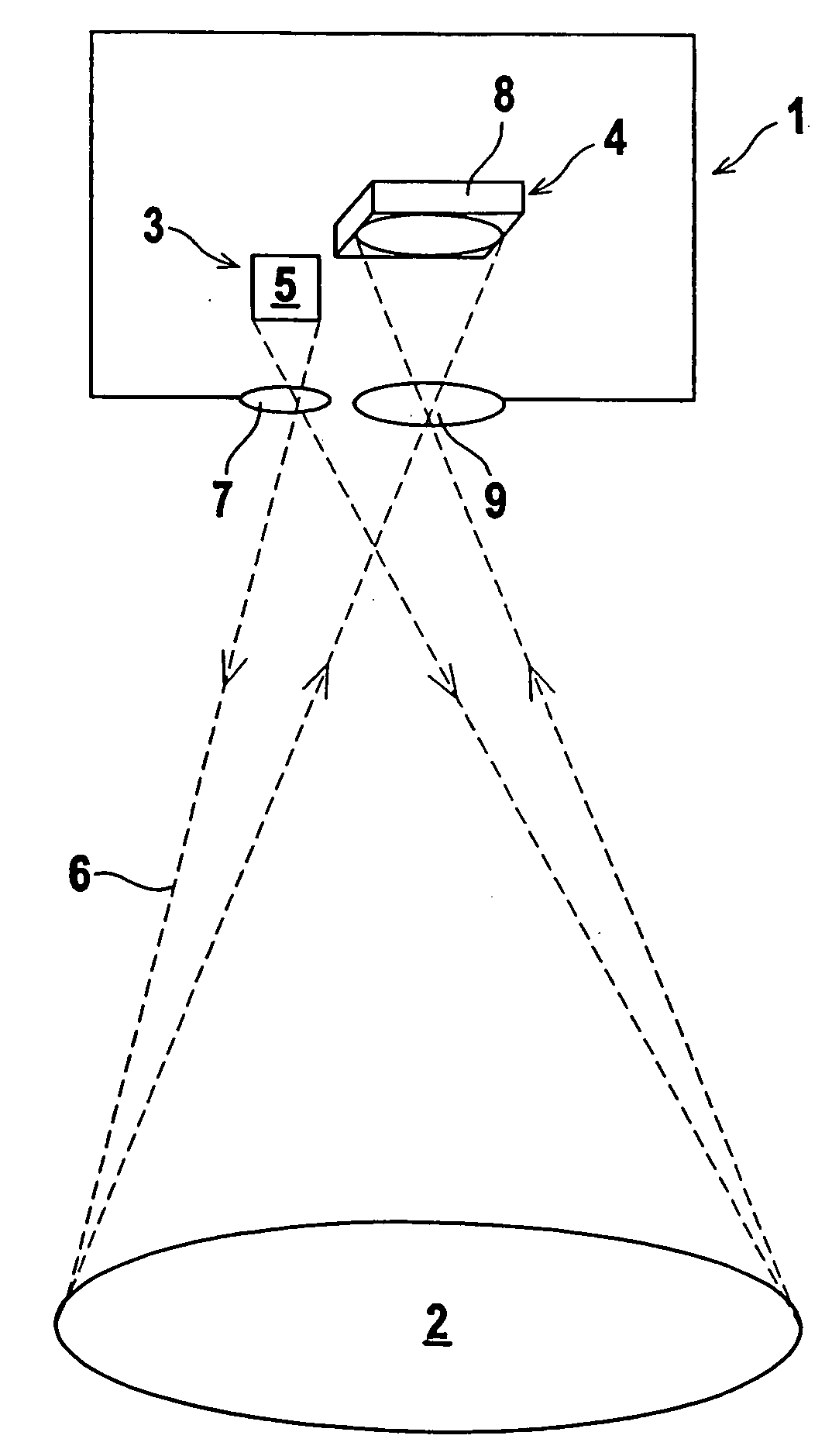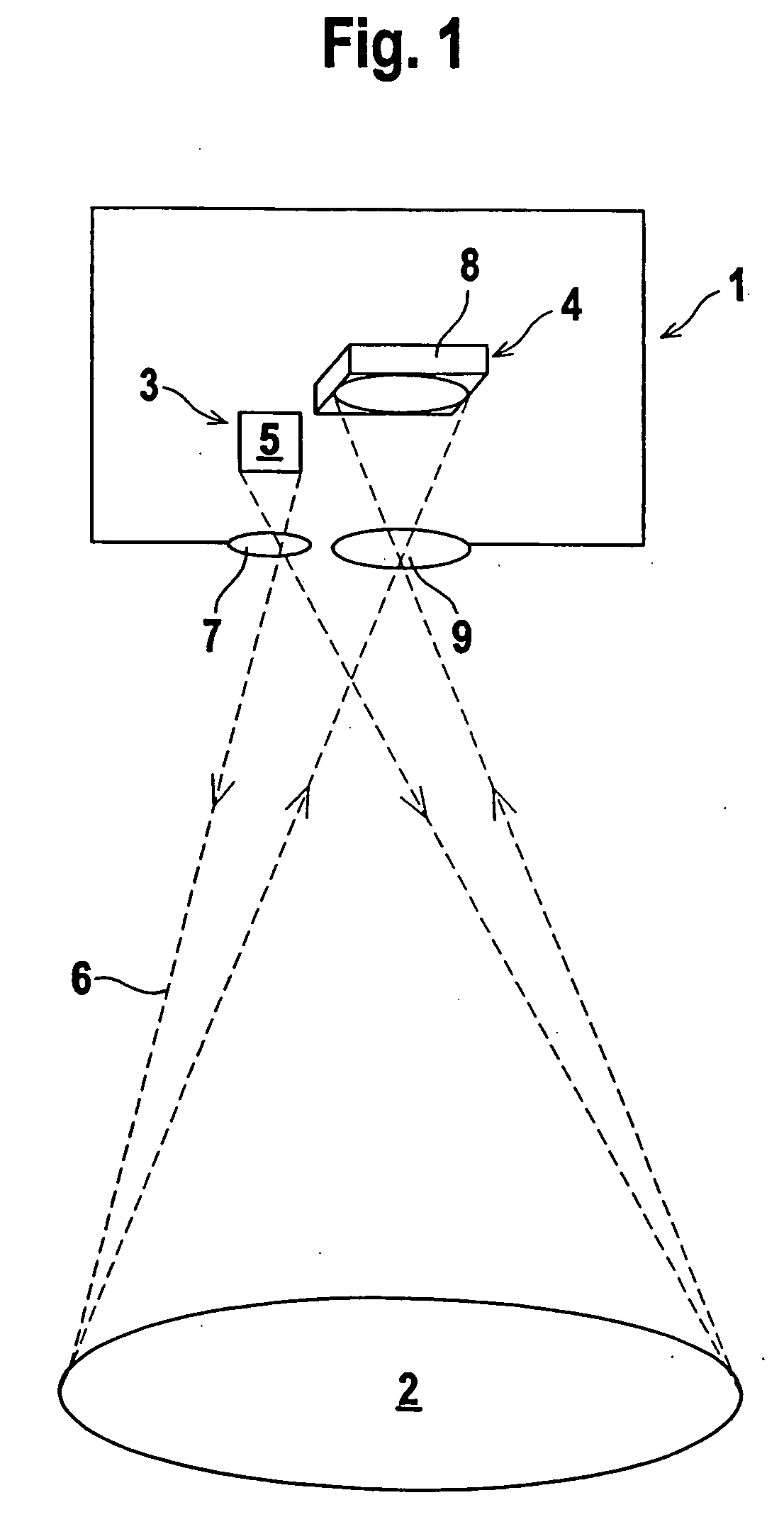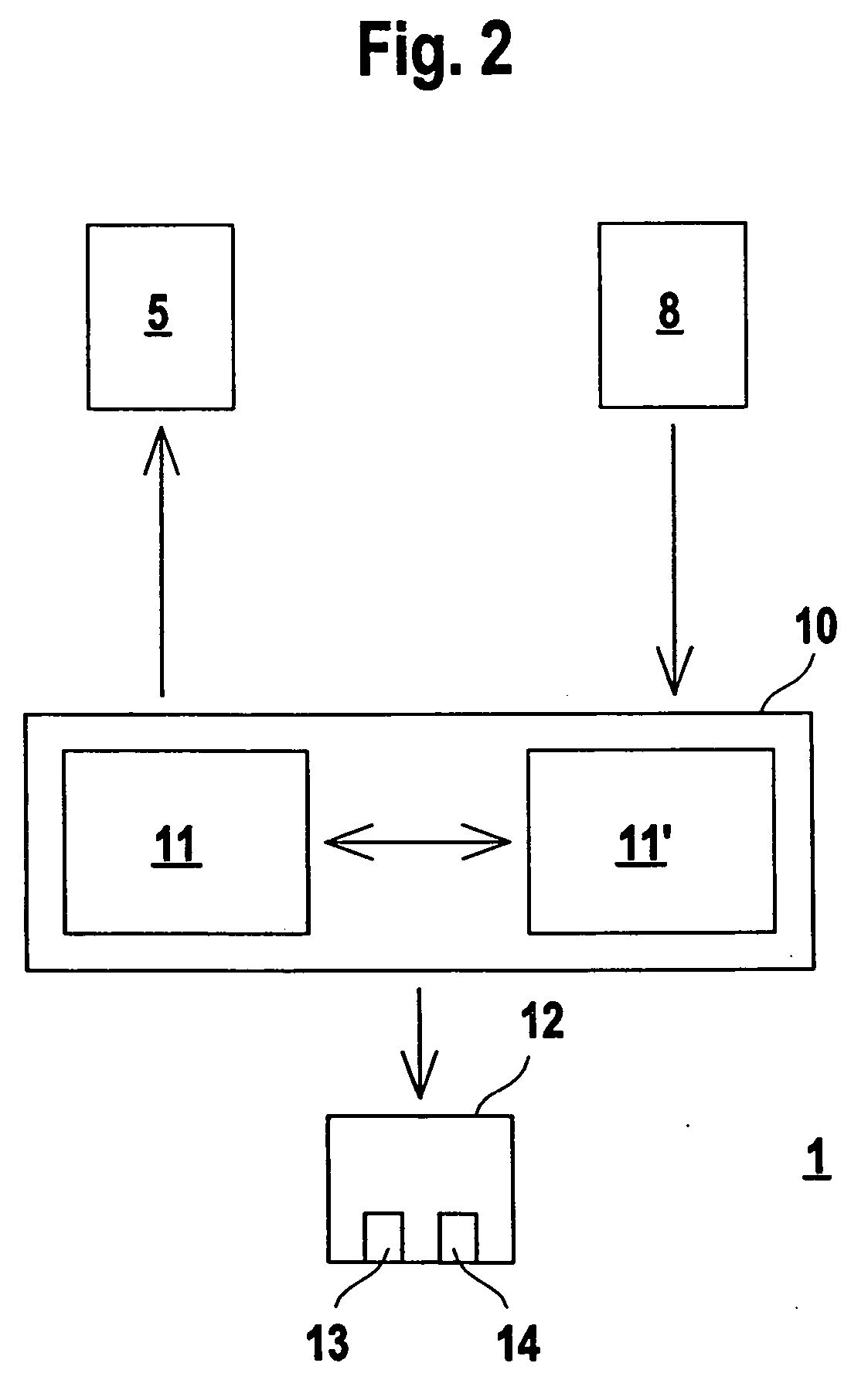Device for monitoring an area of coverage on a work tool
a technology for work tools and devices, applied in the direction of instruments, analogue processes for specific applications, using reradiation, etc., can solve the problems of assembly robots of this type presenting a high potential for danger, reducing the working cycle of assembly robots, and reducing the protection of other people in the area of coverag
- Summary
- Abstract
- Description
- Claims
- Application Information
AI Technical Summary
Benefits of technology
Problems solved by technology
Method used
Image
Examples
Embodiment Construction
[0026]FIG. 1 schematically shows the optical components of a device 1 for monitoring an area of coverage 2 on a work tool. The work tool, which is not shown in FIG. 1, is a machine, a system, or a vehicle. As a result of operations carried out with this work tool, a danger zone is created in the region of the work tool. The device 1 is used for monitoring the danger zone within the area of coverage 2.
[0027] The optical components of the device 1 form a sensor unit, comprising a lighting unit 3 and a camera 4. The lighting unit 3 for the present case is provided with a transmitter 5 in the form of a laser diode which emits light rays 6. Alternatively, the transmitter 5 can also be embodied as light-emitting diode. The lighting device 3 can also consist of arrangements comprising several laser diodes or light-emitting diodes. As a further component, the lighting unit 3 comprises transmitting optics 7, installed downstream of the transmitter 5. The transmitting optics 7 realizes the b...
PUM
 Login to View More
Login to View More Abstract
Description
Claims
Application Information
 Login to View More
Login to View More - R&D
- Intellectual Property
- Life Sciences
- Materials
- Tech Scout
- Unparalleled Data Quality
- Higher Quality Content
- 60% Fewer Hallucinations
Browse by: Latest US Patents, China's latest patents, Technical Efficacy Thesaurus, Application Domain, Technology Topic, Popular Technical Reports.
© 2025 PatSnap. All rights reserved.Legal|Privacy policy|Modern Slavery Act Transparency Statement|Sitemap|About US| Contact US: help@patsnap.com



